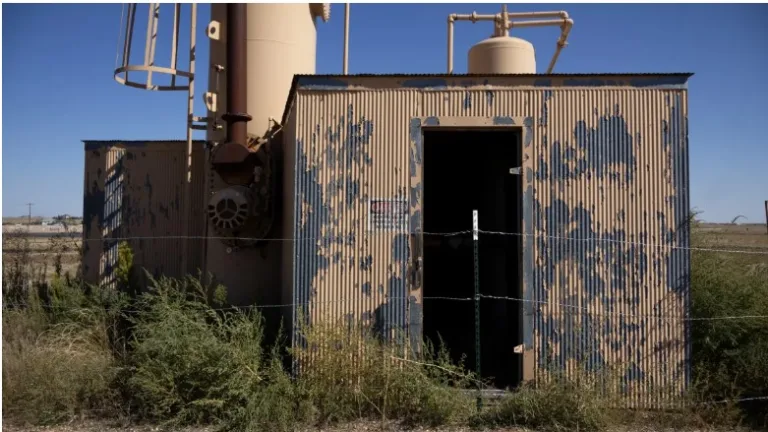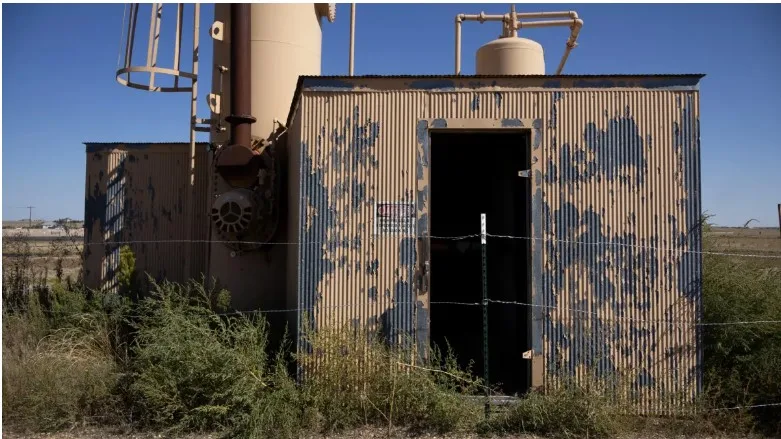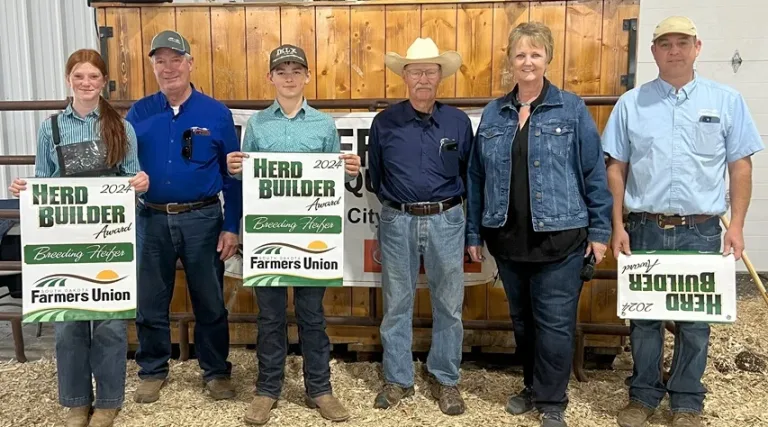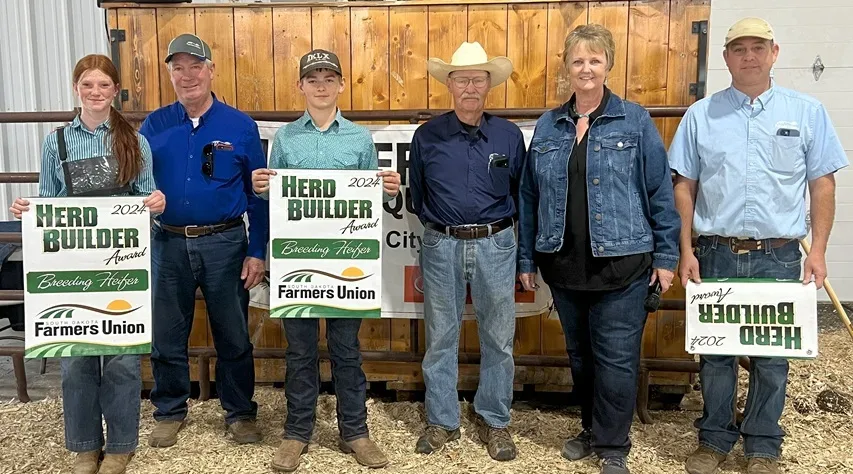LEMMON, SD – Turning the bales of summer into winter pasture grazing helps South Dakota ranchers save time, money, and reduce personal stress while improving rangeland soil health and hay production for future years.
“We started bale grazing in 2014, just leaving bales in the hayfield and strung hot wire for a week’s worth of feed at a time, and it’s worked out really good for us,” says Drew Anderson, rancher near Lemmon, South Dakota. He likes keeping animals and nutrients in the hayfield instead of hauling the nutrients and carbon off the field, as well as cutting hauling costs.

The fuel savings from bale grazing became apparent to Anderson in the winter of 2016, following a Christmas blizzard. “We ran out of bales to graze, and I was burning 35 gallons of diesel a day to haul bales and feed the cows. When bale grazing, I’m burning a dollar’s worth of fuel in the snowmobile to make sure they have water. The time and money savings are well worth it.”
Jessalyn Bachler, South Dakota State University Extension Range Field Specialist in Lemmon, echoes the time savings value for ranchers who also work full-time away from the ranch. “To save several hours daily of feeding in the dark is huge during short winter days. By setting bales and fencing pastures in the fall, you can simply move a cross-fence once a week. It takes a lot less time to run out and check cattle and waters once a day compared to hauling feed daily.”
One benefit that all bale-grazing ranchers agree on is the soil fertility benefits from manure, urine, and decaying bale residue. “We don’t view hay residue as wasted. It is fertilizer,” says Harold Gaugler, rancher from Grant County, North Dakota.
“When we started bale grazing, our hayfield had degraded soil conditions. So, we put the bales on hilltops with open soil with no organic matter on the ground. Our purpose was to bring that field back into production, and we have succeeded.”
The most significant piece of advice from these ranchers who bale graze is to start on a small scale. “While we now rotate cows among bales in 200 acres of hay fields during February and March, my best advice is to start small. For example, you could leave two weeks’ worth of hay bales in a hayfield or haul out two weeks’ worth of hay into a hayfield and just try it,” says Anderson. “Once we started, we haven’t missed a winter without bale grazing.”
If you haven’t tried bale grazing or want to improve your practice, these three ranchers take an in-depth look at their journey in one 15-minute video and 19 shorter, more detailed video segments. In addition, listen to an informative podcast as SDSU’s Jessalyn Bachler describes her research and experience with bale grazing.
Call or visit your local NRCS office to learn more about valuable bale grazing and soil health practices on both rangeland and cropland.
For more information:
– Growing Resilience Through Our Soils offers updated content from South Dakota ranchers. Click on the “Content” tab to view the dropdown list that includes videos, podcasts, articles, and other free resources on topics from bale grazing and rangeland soil health to drought mitigation, calving on grass, red cedar control with prescribed burning and more.
– USDA NRCS-South Dakota YouTube series Growing Resilience Through Our Soils that feature rangeland drought management, Remember the R’s (rotate, rest, recover), and Alternative calving dates.
– USDA NRCS-South Dakota Web site page Range & Pasture information and Publications & Fact Sheets.
– USDA-NRCS South Dakota YouTube page videos on many subjects













